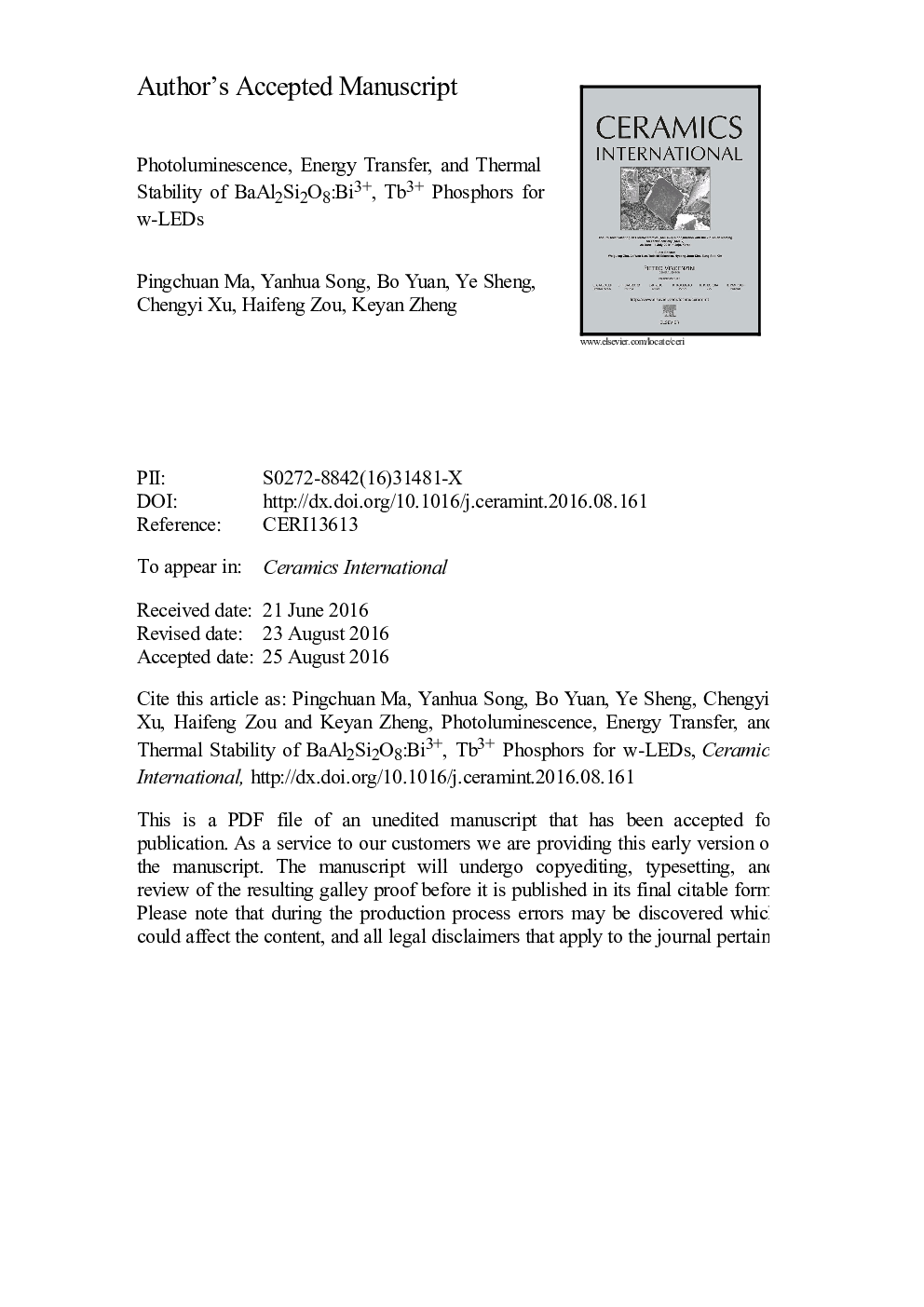| Article ID | Journal | Published Year | Pages | File Type |
|---|---|---|---|---|
| 5438110 | Ceramics International | 2017 | 41 Pages |
Abstract
A series of Tb3+ or/and Bi3+ doped BaAl2Si2O8 phosphors were synthesized via solid-state method. The structure, luminescence properties and thermal stability were investigated. The optimum concentrations of Bi3+ and Tb3+ were 1.5Â mol% and 7Â mol%, respectively. Furthermore, BaAl2Si2O8:0.015Bi3+ and BaAl2Si2O8:0.07Tb3+ phosphors emitted blue and green light and the emission color of BaAl2Si2O8:Bi3+, Tb3+ could be tuned from blue to green through the energy transfer. This energy transfer from Bi3+ to Tb3+ was confirmed and investigated by photoluminescence spectrum and decay lifetime. With constantly increasing Tb3+ concentrations, the energy transfer efficiency from Bi3+ to Tb3+ in BaAl2Si2O8 host increased gradually and reached as high as 86.54%, the quantum yield was about 44.26%. The energy transfer mechanism (Bi3+-Tb3+) was proved to be dipole-dipole mechanism. The Tb3+ emission intensity can be considerably enhanced when monitored at NUV (377Â nm) by co-doping Bi3+ ion. Moreover, the phosphor of BaAl2Si2O8:0.015Bi3+, 0.07Tb3+ could exhibited strong green emission with good CIE chromaticity coordinate. The results indicate that BaAl2Si2O8:Tb3+, Bi3+ is a potential green emitting phosphor for the application in w-LEDs.
Related Topics
Physical Sciences and Engineering
Materials Science
Ceramics and Composites
Authors
Pingchuan Ma, Yanhua Song, Bo Yuan, Ye Sheng, Chengyi Xu, Haifeng Zou, Keyan Zheng,
